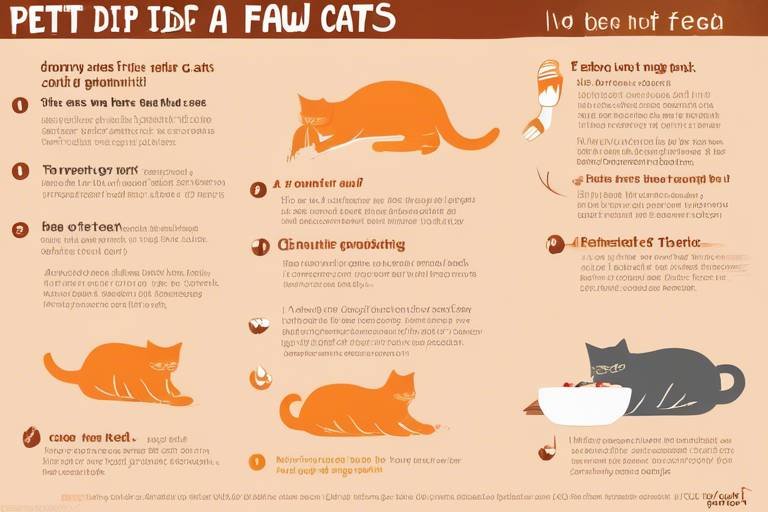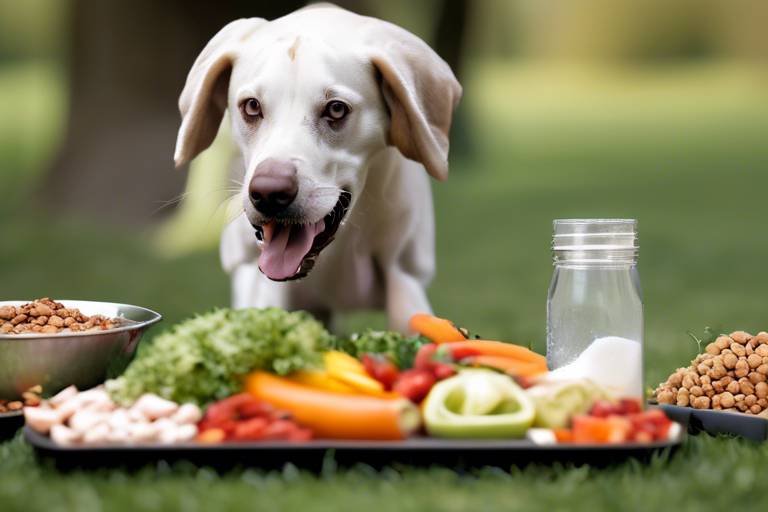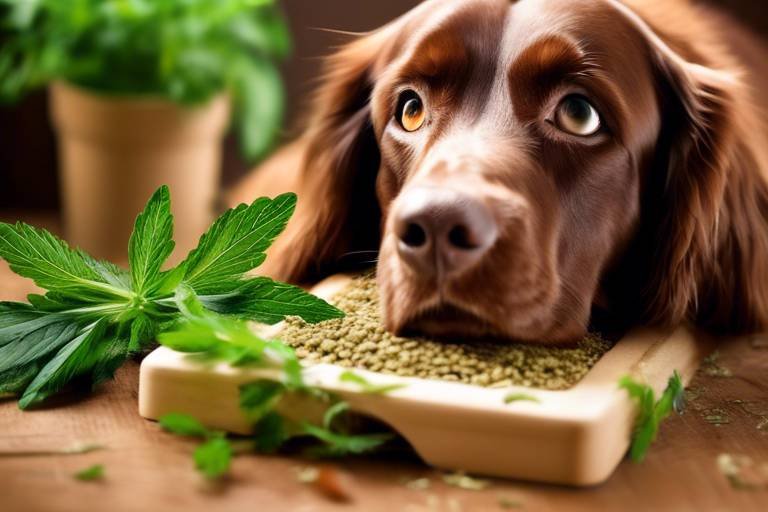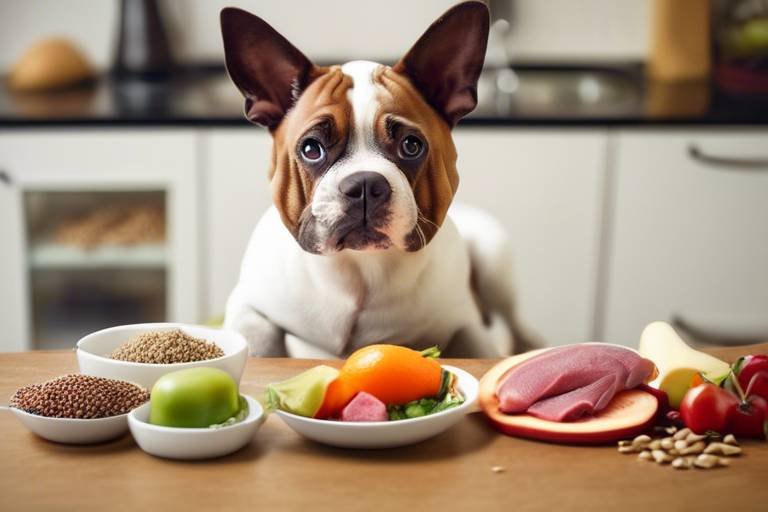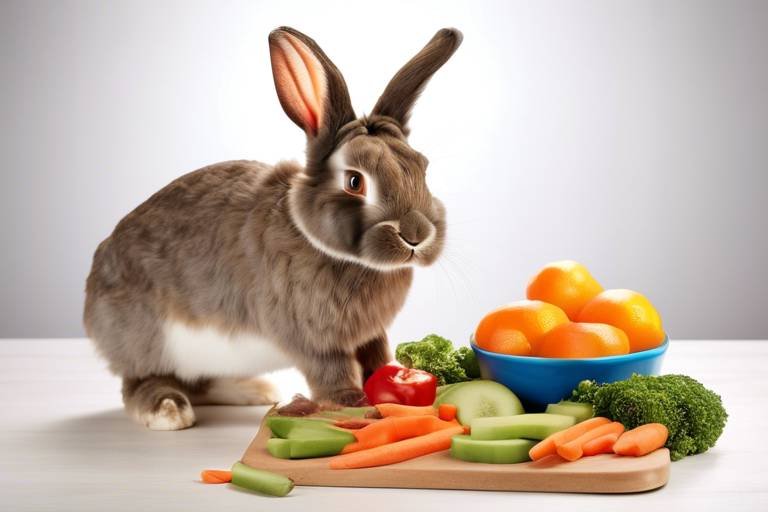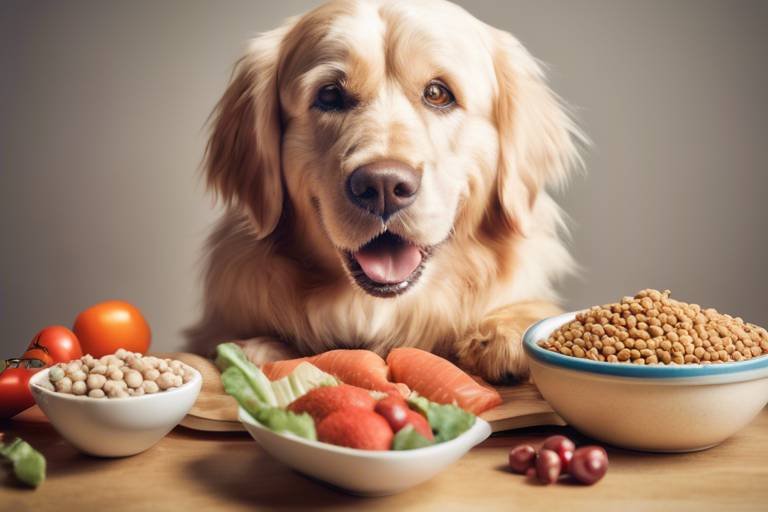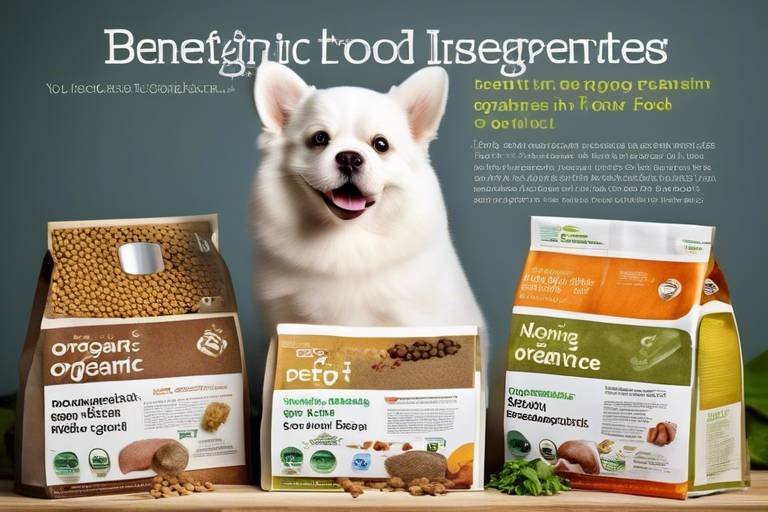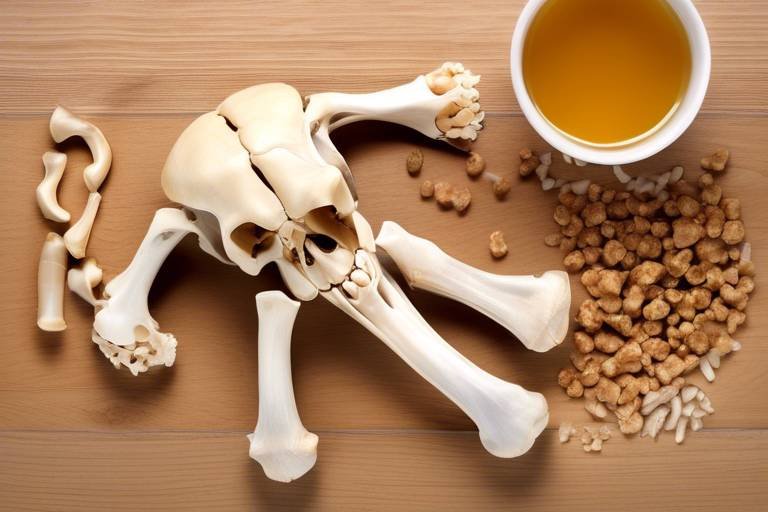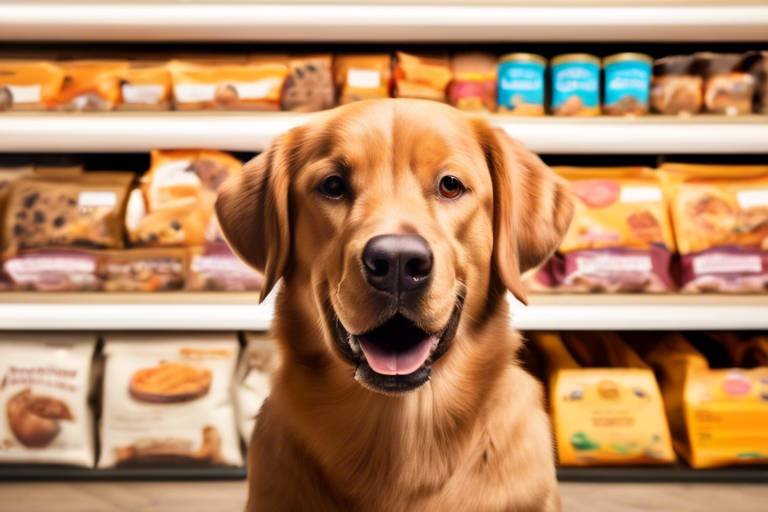The Benefits of Feeding Cats a Raw Diet
Have you ever wondered what goes into your cat’s food bowl? If you’re like most cat owners, you want the best for your furry friend. One of the most intriguing options that have been gaining traction is the raw diet. This feeding method, which mimics what cats would naturally eat in the wild, can offer a plethora of benefits for your feline companion. From improved health to behavioral enhancements, a raw diet can transform your cat's life in ways you might not have considered. So, let’s dive into the advantages of switching to this natural approach and see if it might be the right fit for your beloved pet.
First and foremost, let’s talk about digestive health. When you feed your cat a raw diet, you’re providing them with natural enzymes and probiotics that are often missing in processed foods. These components work together to enhance nutrient absorption, which means your cat can get more out of their meals. Imagine your cat’s digestive system as a finely tuned engine; the better the fuel, the smoother it runs. This can lead to fewer gastrointestinal issues, such as diarrhea or constipation, allowing your cat to feel more comfortable and energetic.
Another significant advantage of a raw diet is the impact it can have on your cat's coat. A diet rich in essential fatty acids can lead to a shinier, healthier appearance and reduced shedding. Think of it this way: just as a well-balanced diet can improve your own skin and hair, the same applies to your feline friend. Cats on a raw diet often have coats that are softer and more vibrant, which is a clear indicator of their overall health.
But it doesn’t stop there! A raw diet can also promote better skin health. By reducing allergens and irritants that are often found in commercial cat foods, your cat may experience fewer skin problems. Imagine your cat feeling more comfortable in their own skin, free from the itchiness and discomfort that can come from food allergies. This means less scratching and more time for cuddling!
Hydration is another critical factor to consider. Raw meat contains moisture, which helps to keep your cat hydrated. This is particularly important for their overall health and can prevent urinary tract issues. Think of it as giving your cat a delicious drink along with their meal. When your cat is well-hydrated, they are less likely to face health problems down the line.
Let’s not forget about dental health. Chewing on raw meat and bones can act as a natural toothbrush for your cat, promoting dental hygiene by reducing plaque buildup. Just like humans need to brush their teeth to avoid cavities, your cat can benefit from this natural cleaning process. It’s a simple yet effective way to keep their teeth and gums healthy!
Maintaining a healthy weight is crucial for your cat’s longevity and quality of life. A raw diet can assist in this area by providing high-quality protein and low carbohydrates, which are essential for their energy needs. Think of it as fueling a high-performance sports car; you wouldn’t fill it with subpar gas, right? Similarly, your cat deserves the best fuel for their body to keep them active and fit.
Now, let’s shift gears and discuss behavior. Cats fed a raw diet often exhibit improved behavior, including reduced aggression and anxiety. When their nutritional needs are met, they tend to be more balanced and relaxed. It’s like giving your cat a sense of peace and contentment, allowing them to thrive in their environment.
Feeding raw also mimics a cat's natural hunting behavior. This stimulation of their instincts can provide mental enrichment, leading to a more fulfilled and active pet. Imagine your cat pouncing and playing with enthusiasm, just as they would in the wild. It’s not just about feeding; it’s about enriching their lives!
Of course, transitioning to a raw diet requires careful planning and gradual changes. It’s essential to follow best practices to ensure your cat accepts the new food without digestive upset. Start by mixing a small amount of raw food with their current diet, gradually increasing the proportion over time. This gentle approach can make the transition smoother and more successful.
- Is a raw diet safe for all cats? Most cats can thrive on a raw diet, but it’s always best to consult with your veterinarian first, especially if your cat has underlying health issues.
- How do I ensure a balanced raw diet? It's important to include a variety of meats and supplements to ensure your cat gets all the necessary nutrients. Consulting a pet nutritionist can be very helpful.
- What are the risks of feeding a raw diet? Potential risks include bacterial contamination and nutritional imbalances if not properly managed. Always handle raw food with care and follow safe food handling practices.
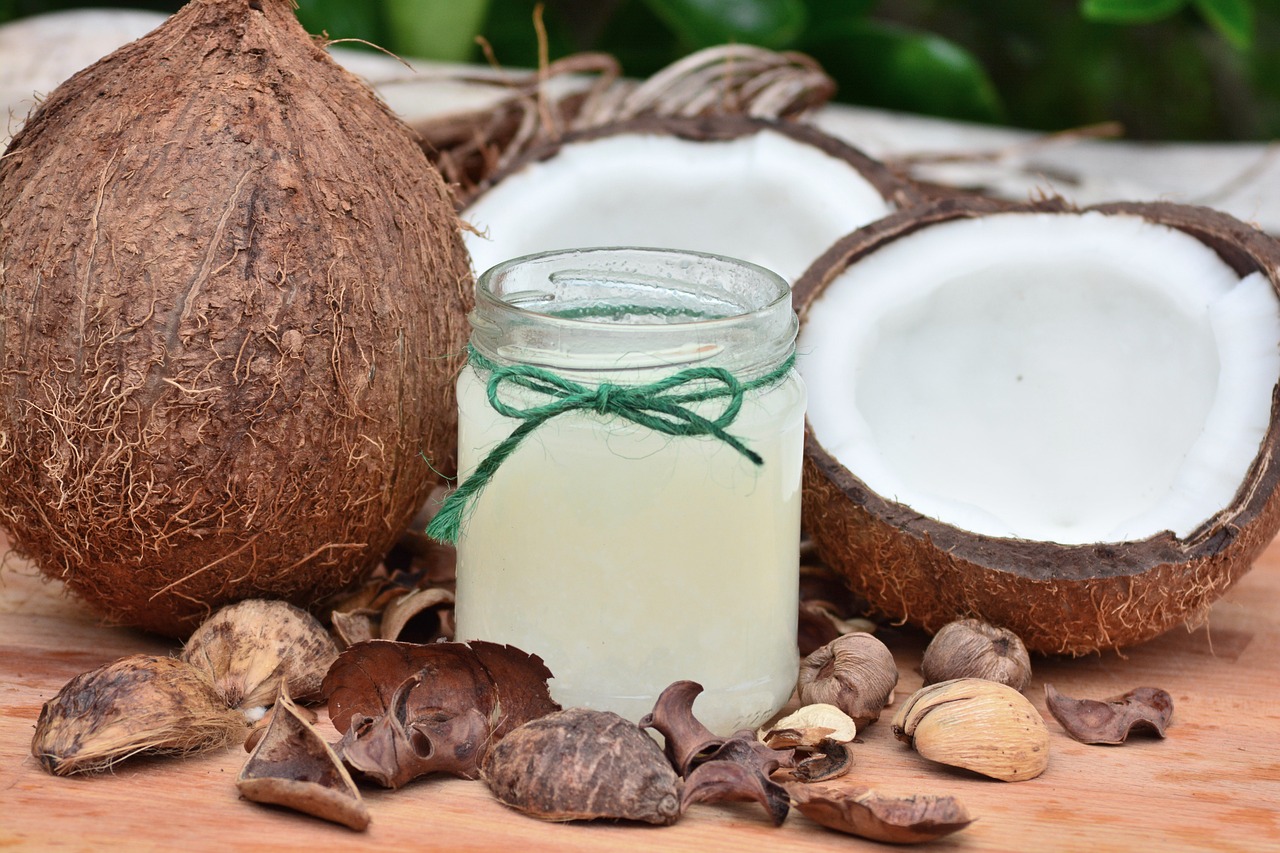
Improved Digestive Health
Feeding your cat a raw diet can be a game-changer when it comes to digestive health. Unlike processed foods, which often contain fillers and artificial ingredients, a raw diet is packed with natural enzymes and probiotics that can significantly enhance your cat's ability to absorb nutrients. Just imagine your cat's digestive system as a finely tuned engine; when you feed it the right fuel, it runs smoothly and efficiently. This means fewer gastrointestinal issues, such as diarrhea or vomiting, which can be common with less nutritious diets.
One of the standout benefits of a raw diet is its ability to promote a healthy gut flora. The natural probiotics found in raw meat can help balance the bacteria in your cat's intestines, leading to better digestion and overall health. Think of these probiotics as the friendly neighborhood helpers that keep everything running smoothly in your cat's belly. When your cat's gut is happy, they are less likely to experience uncomfortable bloating or gas, making for a much happier kitty!
Moreover, the high moisture content in raw food contributes to hydration, which is crucial for digestive health. Cats are notorious for not drinking enough water, and dehydration can lead to serious problems like urinary tract infections. By incorporating raw meat into their diet, you're not only providing them with essential nutrients but also helping to keep their digestive system well-hydrated. This is especially important as it can prevent the formation of crystals in the urinary tract, which can be painful and dangerous.
Transitioning to a raw diet should be done gradually to avoid overwhelming your cat's digestive system. Start by mixing small amounts of raw food with their regular kibble, gradually increasing the raw portion over time. This method allows their digestive system to adapt, much like easing into a cold pool rather than jumping in all at once. If you're unsure about how to balance their diet, consider consulting with a veterinarian or a pet nutritionist who specializes in raw feeding.
In summary, a raw diet can lead to significant improvements in your cat's digestive health. With better nutrient absorption, reduced gastrointestinal issues, and enhanced hydration, your feline friend will not only feel better but also thrive in their overall well-being. So, if you want to see your cat flourish, it might be time to consider a shift towards a more natural, raw diet!
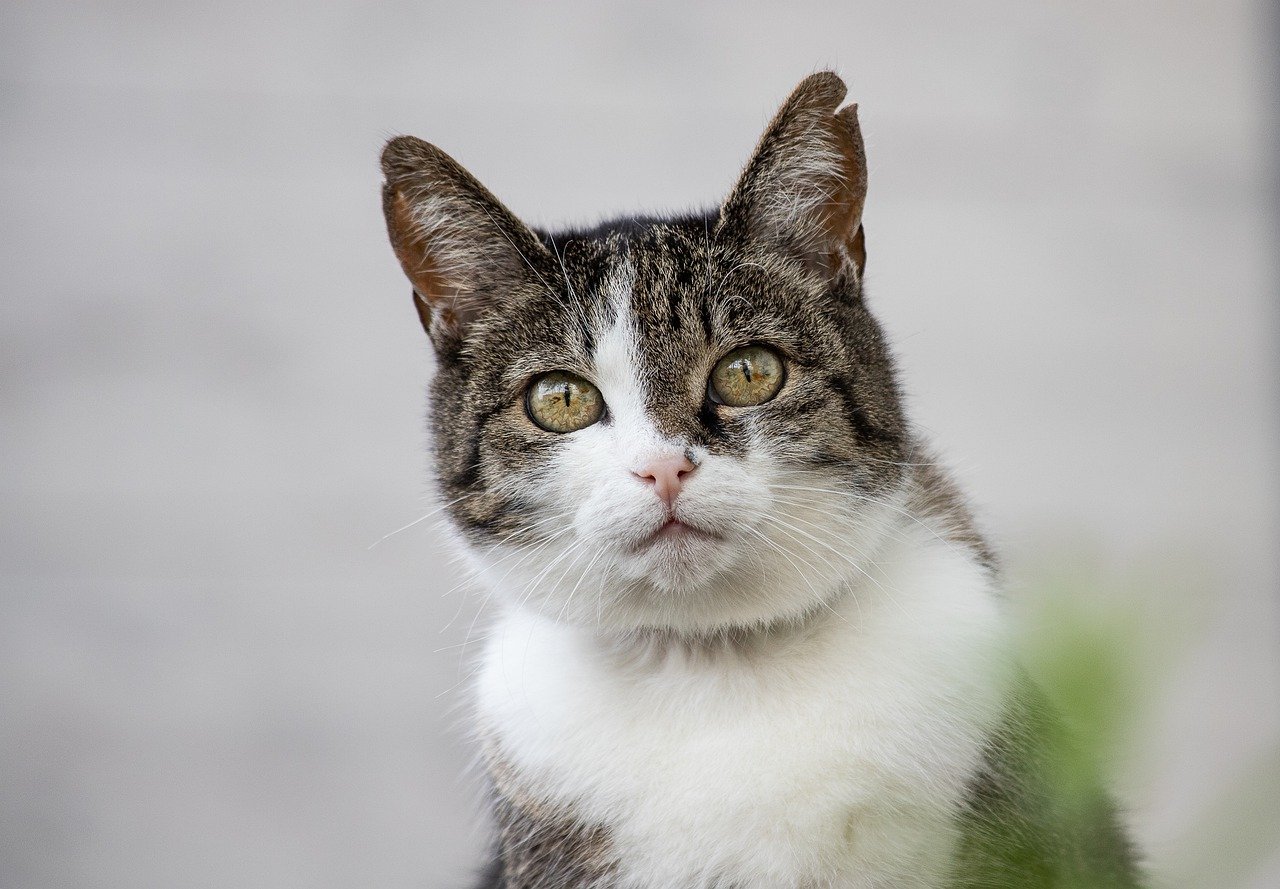
Enhanced Coat Condition
When it comes to our furry companions, a shiny and healthy coat is often a reflection of their overall well-being. A raw diet can work wonders in enhancing your cat's coat condition, and it all boils down to the essential fatty acids and nutrients found in fresh, unprocessed foods. Unlike commercial cat foods that may contain fillers and artificial ingredients, a raw diet is packed with high-quality proteins and omega fatty acids, which are crucial for maintaining a lustrous coat. Imagine your cat strutting around with a coat that glistens in the sunlight, turning heads and drawing compliments—this can be a reality with the right nutrition!
One of the key benefits of a raw diet is the inclusion of ingredients like fish, chicken, and beef, which are rich in omega-3 and omega-6 fatty acids. These nutrients not only promote a shiny coat but also help in reducing shedding. You might be wondering, how does this work? Well, omega fatty acids play a vital role in maintaining skin elasticity and hydration. When your cat's skin is well-hydrated and nourished, it results in fewer dry patches and less flaking, paving the way for a smoother, healthier appearance.
Moreover, a raw diet can help combat common skin issues that can lead to a dull coat. Many cats suffer from allergies or sensitivities to certain ingredients in commercial cat foods, which can manifest in skin irritations and poor coat quality. By transitioning to a raw diet, you can eliminate these problematic ingredients and provide your kitty with a more natural source of nutrition. This dietary change can significantly reduce allergens and irritants, leading to fewer skin problems and a more comfortable life for your feline friend.
To further illustrate the impact of a raw diet on coat health, consider the following table that highlights the differences between a typical commercial diet and a raw diet:
| Aspect | Commercial Diet | Raw Diet |
|---|---|---|
| Protein Source | Processed meats and fillers | Fresh, whole meats and organs |
| Fatty Acids | Often lacking | Rich in omega-3 and omega-6 |
| Allergen Potential | Higher due to fillers | Lower, more natural ingredients |
| Skin Health | May cause irritations | Promotes hydration and elasticity |
In conclusion, switching your cat to a raw diet can lead to remarkable improvements in their coat condition. Not only will you notice a shinier and healthier appearance, but your cat will also benefit from reduced shedding and fewer skin irritations. It's like giving your feline a spa treatment from the inside out! So, if you're looking to elevate your cat's grooming game, consider the incredible advantages of a raw diet.
- Is a raw diet safe for all cats? - Most cats can thrive on a raw diet, but it's essential to consult your veterinarian, especially if your cat has pre-existing health conditions.
- How do I transition my cat to a raw diet? - Gradually introduce raw food over several days to allow your cat's digestive system to adjust. Start by mixing a small amount of raw food with their current diet.
- What types of raw food should I include? - Focus on high-quality meats, organs, and bones. You can also add fish and eggs for additional nutrients.
- Will my cat's coat improve immediately? - While some improvements may be noticeable within weeks, significant changes may take a few months as the diet takes full effect.
Skin Health Benefits
When it comes to our beloved feline friends, their skin health is just as important as their overall well-being. A raw diet can be a game-changer in this regard. By incorporating fresh, unprocessed meats and organs into your cat's meals, you are not only providing essential nutrients but also minimizing exposure to common allergens found in many commercial cat foods. This can lead to a significant reduction in skin irritations and conditions such as eczema and dermatitis.
One of the standout features of a raw diet is its ability to deliver high levels of omega-3 and omega-6 fatty acids. These fatty acids play a crucial role in maintaining skin integrity and promoting a healthy, shiny coat. Think of these nutrients as the building blocks for your cat's skin health. A diet rich in these essential fats can help combat dryness and flakiness, leading to a more comfortable and happier kitty.
Moreover, raw diets are typically free from artificial preservatives and fillers, which can often trigger allergic reactions in sensitive cats. By feeding your cat a diet that closely resembles what they would naturally hunt, you are essentially reducing their exposure to potential irritants. This natural approach can contribute to a more balanced skin microbiome, which is vital for preventing infections and maintaining overall skin health.
To illustrate the benefits of a raw diet on skin health, consider the following table:
| Component | Benefit |
|---|---|
| Omega-3 Fatty Acids | Reduces inflammation and promotes a healthy coat |
| Omega-6 Fatty Acids | Supports skin barrier function and hydration |
| Natural Proteins | Provides essential amino acids for skin repair |
| Minimal Allergens | Reduces risk of allergic reactions and skin irritations |
In conclusion, switching your cat to a raw diet can yield impressive results for their skin health. Not only does it provide essential nutrients that promote a shiny coat and reduce irritations, but it also supports their overall health by minimizing exposure to allergens. So, if your furry friend is struggling with skin issues, it might be time to consider a raw diet as a viable solution.
- What is a raw diet for cats? A raw diet consists of uncooked meats, organs, and bones that mimic what cats would eat in the wild.
- How do I transition my cat to a raw diet? Start by gradually introducing raw food into their meals, mixing it with their current food to avoid digestive upset.
- Are there any risks associated with a raw diet? Yes, there are risks, such as bacterial contamination. It's crucial to handle raw food safely and consult with a veterinarian.
- Will a raw diet help with my cat's allergies? Many pet owners report improvements in their cats' allergies after switching to a raw diet, but results can vary.
Hydration from Raw Food
When it comes to keeping your feline friend healthy, hydration is a crucial factor that often gets overlooked. Did you know that many cats are not great drinkers? This can lead to dehydration, which can cause a host of health problems, including urinary tract issues. That's where a raw food diet comes into play. Raw meat is not only a source of high-quality protein but also contains a significant amount of moisture. In fact, raw meat can have moisture content ranging from 60% to 75%, depending on the type of meat. This means that when you feed your cat raw, they are getting a natural source of hydration right from their food.
Consider this: if your cat is primarily eating dry kibble, they might not be getting enough water in their diet. Dry food typically contains only about 10% moisture. This stark difference can lead to chronic dehydration, which can impact your cat's overall health. By switching to a raw diet, you’re not just providing them with a more natural and biologically appropriate food option; you’re also helping to ensure they stay hydrated. Think of it as giving them a refreshing drink with every meal!
Moreover, hydration from raw food can help prevent the formation of urinary crystals and stones, which are common in cats that don’t drink enough water. A hydrated cat is a happy cat, and a raw diet can be a game-changer in achieving that. Plus, the moisture in raw food aids in digestion, helping to break down food more effectively and allowing for better nutrient absorption. So, when you’re considering your cat’s diet, remember that hydration is just as important as the nutrients they’re consuming.
To illustrate the importance of hydration in your cat’s diet, here’s a quick comparison of moisture content in different types of cat food:
| Type of Food | Moisture Content |
|---|---|
| Raw Meat | 60% - 75% |
| Canned Food | 75% - 80% |
| Dry Kibble | 10% - 12% |
In summary, incorporating raw food into your cat's diet not only provides essential nutrients but also significantly contributes to their hydration needs. It's a simple yet effective way to boost their health and well-being. So, if you want your furry friend to thrive, consider the hydration benefits of a raw diet. Your cat will thank you for it!
- How much raw food should I feed my cat? - The amount depends on your cat's weight, age, and activity level. Generally, it’s recommended to feed about 2-3% of their body weight in raw food daily.
- Can I mix raw food with dry food? - It's best to transition gradually. Mixing can lead to digestive upset, so it's advisable to feed them separately.
- Is a raw diet safe for all cats? - While many cats thrive on raw diets, it’s essential to consult with your veterinarian, especially if your cat has underlying health issues.
Natural Teeth Cleaning
One of the often-overlooked benefits of feeding your cat a raw diet is the that occurs when they chew on raw meat and bones. You might be surprised to learn that just like humans, cats can suffer from dental issues, including plaque buildup and gum disease. The act of chewing on raw meat and bones not only satisfies their instinctual need to gnaw but also serves as a natural way to maintain their dental health.
When cats crunch down on raw bones, they are effectively scraping their teeth clean, removing food particles and plaque that can lead to more serious dental problems. This natural process can help reduce the need for professional dental cleanings, saving you both time and money. Think of it as a type of feline dental floss—a simple yet effective way to keep their teeth in top shape!
Moreover, the texture of raw meat can stimulate the gums, promoting blood circulation and overall gum health. Healthy gums are essential for preventing periodontal disease, which can lead to tooth loss and other health complications. It's fascinating how nature has equipped our pets with the tools they need to maintain their health, and a raw diet taps into that instinct.
To maximize the dental benefits of a raw diet, consider incorporating a variety of textures and types of meat. For instance, tougher cuts of meat and whole bones can provide more significant cleaning action compared to softer meats. However, it's crucial to ensure that the bones are appropriate for your cat's size and chewing ability to prevent any choking hazards. Always supervise your cat while they are enjoying their raw meals to ensure their safety.
In summary, feeding your cat a raw diet not only contributes to their overall health but also plays a vital role in maintaining their dental hygiene. By allowing them to indulge in their natural chewing instincts, you're helping them achieve a cleaner, healthier mouth while satisfying their predatory nature.
- Is a raw diet safe for all cats? - While many cats can thrive on a raw diet, it’s essential to consult with your veterinarian, especially if your cat has existing health issues.
- How do I transition my cat to a raw diet? - Gradually introduce raw food into their diet over a week or two, mixing it with their current food to ease the transition.
- What types of meat are best for a raw diet? - A variety of meats such as chicken, turkey, and beef can be beneficial. Always ensure that the meat is fresh and sourced from reputable suppliers.
- Will my cat get enough nutrients from a raw diet? - Yes, a well-balanced raw diet can provide all the essential nutrients your cat needs. However, it’s important to do your research or consult a nutritionist to ensure balance.
Weight Management
Managing your cat's weight can be a daunting task, especially when faced with the plethora of pet food options available today. However, switching to a raw diet can be a game changer for your feline friend. One of the most significant advantages of a raw diet is its ability to assist in maintaining a healthy weight. This is largely due to the high-quality protein content and low carbohydrates found in raw meats, which cater to a cat's natural dietary needs.
Unlike many commercial cat foods that are packed with fillers and unnecessary carbohydrates, a raw diet is focused on providing the essential nutrients that cats thrive on. This means that your cat will be receiving more energy from the proteins they consume, allowing them to stay active and healthy. Imagine your cat as a little wild hunter, prowling around the house, fueled by the energy derived from a diet that mimics what they would eat in the wild. With a raw diet, you’re not just feeding them; you’re empowering them!
Additionally, raw diets can help prevent obesity, a common issue in domestic cats. Obesity can lead to a myriad of health problems, including diabetes and joint issues. By offering a diet that is rich in protein and low in carbs, you can help your cat maintain a healthy weight. When you think about it, it’s like giving them a personal trainer in the form of their meals! The right balance of nutrients encourages muscle development and fat loss, which is crucial for their overall well-being.
To ensure that your cat is getting the right amount of food, it's essential to monitor their intake closely. You can calculate the appropriate portion sizes based on their weight and activity level. For example:
| Cat Weight (lbs) | Daily Raw Food Intake (oz) |
|---|---|
| 5-10 | 3-4 |
| 11-15 | 4-6 |
| 16-20 | 6-8 |
It’s also worth noting that when transitioning your cat to a raw diet, patience is key. Gradually introducing raw food can help prevent digestive upset and make the transition smoother. Start by mixing a small amount of raw food with their regular diet and slowly increase the raw portion while decreasing the commercial food. This method not only helps your cat adjust but also allows you to monitor their weight effectively during the transition.
In conclusion, a raw diet can play a pivotal role in your cat's weight management. By focusing on high-quality proteins and minimizing carbohydrates, you're setting your furry friend up for a healthier, more active life. So why not give it a try? Your cat deserves the best, and a raw diet might just be the key to unlocking their full potential!
- Is a raw diet safe for all cats? - While many cats thrive on a raw diet, it's essential to consult with your veterinarian to ensure it's appropriate for your specific cat.
- How do I transition my cat to a raw diet? - Gradually introduce raw food by mixing it with their current diet and slowly increasing the raw portion over time.
- What types of raw food can I feed my cat? - Raw meat, organs, and bones are all great options. Ensure they are sourced from reputable suppliers.
- Can a raw diet help with my cat's allergies? - Many owners report improvements in allergy symptoms after switching to a raw diet, but individual results may vary.
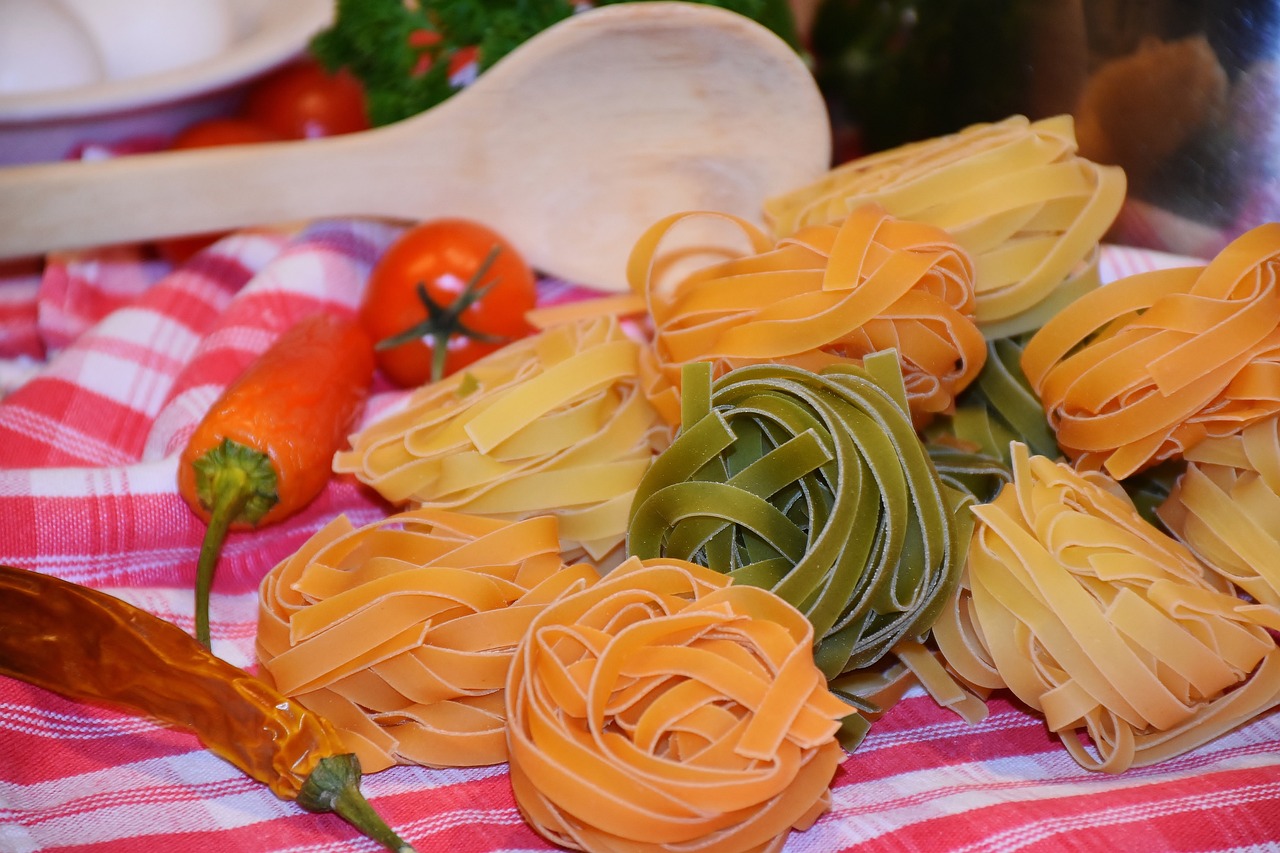
Behavioral Improvements
Feeding your cat a raw diet can lead to remarkable that many pet owners might not expect. Imagine a cat that is more relaxed, less anxious, and even more playful. It’s not just a dream; it can be a reality when you provide your feline friend with the nutrition they instinctively crave. When cats consume a diet that aligns with their natural instincts, their overall well-being improves significantly. This is because a raw diet meets their nutritional needs much more effectively than processed foods.
One of the key behavioral changes you might notice is a reduction in aggression. Cats that are fed a raw diet often demonstrate a more balanced temperament. This is largely due to the high-quality protein and essential nutrients present in raw meat, which help stabilize their energy levels. Think about it: when they’re not feeling sluggish or irritable from subpar food, they’re more likely to engage positively with their surroundings and the people in their lives.
Moreover, a raw diet can stimulate your cat's natural hunting instincts. Cats are natural hunters, and feeding them raw food mimics their instinctual behaviors. This not only satisfies their primal urges but also provides mental enrichment. When you watch your cat engage with their food, whether it's tearing into a piece of raw meat or playing with a whole prey item, you can see how their instincts come alive. This behavior can lead to a more fulfilled and active pet, reducing destructive behaviors that often stem from boredom or frustration.
To further illustrate the connection between diet and behavior, consider the following table:
| Behavioral Change | Raw Diet Impact |
|---|---|
| Reduced Aggression | Balanced energy levels and nutritional fulfillment |
| Increased Playfulness | Stimulated hunting instincts and mental enrichment |
| Less Anxiety | Improved overall health and comfort |
| Better Social Interactions | Enhanced mood and reduced stress |
In conclusion, transitioning your cat to a raw diet can unlock a treasure trove of behavioral benefits. By meeting their nutritional needs, you create a happier, healthier, and more engaged pet. Just like us humans, when cats feel good physically, they tend to express that joy in their behavior. So, if you’re looking to enhance your cat's life in more ways than one, consider the shift to a raw diet. Your furry friend will thank you for it!
- Is a raw diet safe for all cats? - While many cats thrive on a raw diet, it's essential to consult your veterinarian before making any significant dietary changes.
- How do I transition my cat to a raw diet? - Gradually introduce raw food by mixing it with their current diet over several days to avoid digestive upset.
- What types of raw food are best for my cat? - A balanced raw diet should include a variety of meats, organs, and bones to provide complete nutrition.
- Will my cat require any supplements on a raw diet? - Depending on the specific raw diet plan, some cats may benefit from additional supplements; consult your vet for personalized advice.
Encouraging Natural Hunting Instincts
When you think about it, cats are natural hunters. Their ancestors roamed the wild, stalking prey and honing their skills. By feeding your feline friend a raw diet, you're not just providing nutrition; you're also tapping into their primal instincts. Imagine your cat, prowling around the house, eyes wide and focused, as if they're on a mission. This is what a raw diet can encourage—a return to their instinctual behavior.
Feeding your cat raw meat mimics the experience of hunting. Each meal becomes an adventure, stimulating their senses and keeping their minds sharp. Think of it as a game of cat and mouse, where your cat is the star player, chasing after their dinner. This not only provides physical exercise but also mental enrichment, which is essential for a happy and healthy cat. When cats engage in these natural behaviors, they often exhibit less boredom and destructive tendencies, leading to a more harmonious home.
Moreover, a raw diet can help in developing your cat's problem-solving skills. When they encounter different textures and flavors in their food, it encourages curiosity and exploration. This is akin to a child discovering new toys; each meal becomes a new puzzle to solve. You might notice your cat pawing at their food or playing with it before eating, which is a sign of their hunting instincts kicking in.
It's important to remember that transitioning to a raw diet should be done gradually. Start by incorporating small amounts of raw food into their meals, allowing them to adjust to the new texture and taste. Over time, you can increase the raw components while decreasing their previous diet. This gradual approach helps to ensure that your cat not only accepts the new food but also enjoys the experience of "hunting" for their meals.
In conclusion, feeding your cat a raw diet is more than just a dietary choice; it's a way to enrich their lives and encourage their natural hunting instincts. By engaging their senses and allowing them to partake in their instinctual behaviors, you're setting the stage for a happier, healthier, and more fulfilled feline companion.
- Is a raw diet safe for all cats? - While many cats thrive on a raw diet, it's essential to consult with your veterinarian to ensure it's appropriate for your cat's individual health needs.
- How do I transition my cat to a raw diet? - Start slowly by mixing raw food with their current diet and gradually increase the raw portion over time.
- What types of raw food should I feed my cat? - A balanced raw diet typically includes raw meat, organs, and bones. It's crucial to ensure the diet is nutritionally complete.
- Can a raw diet help with my cat's behavior? - Yes, many cat owners report improved behavior, including reduced anxiety and aggression, after switching to a raw diet.
Transitioning to a Raw Diet
Making the switch to a raw diet for your feline friend can seem daunting, but with the right approach, it can be a smooth transition. First and foremost, it’s essential to take it slow. Cats are creatures of habit, and suddenly changing their diet can lead to digestive upset. Start by introducing small amounts of raw food mixed with their current kibble. This gradual introduction helps your cat's digestive system adjust to the new food.
When transitioning, consider using a mix of different protein sources. Cats are obligate carnivores, which means they thrive on a diet primarily made up of meat. Include options like chicken, turkey, and beef. Each protein source offers different nutrients, and variety can keep your cat interested and engaged with their meals. However, ensure that the meat is fresh and sourced from reputable suppliers to avoid any health risks.
During this transition, monitor your cat's behavior and health closely. Look for signs of acceptance, such as eagerly eating the raw food or showing excitement at mealtime. Additionally, keep an eye out for any digestive issues like diarrhea or vomiting. If any problems arise, it may be necessary to slow down the process or consult with a veterinarian. Remember, patience is key!
Another crucial aspect of transitioning is to maintain a balanced diet. While raw meat is a fantastic source of protein, it's vital to include other components such as organs and bones to provide a complete nutritional profile. You might want to consider using a raw food calculator to ensure your cat is receiving the right balance of nutrients. Here’s a simple breakdown of what to include:
| Food Type | Examples | Purpose |
|---|---|---|
| Muscle Meat | Chicken, Beef, Turkey | High-quality protein source |
| Organs | Liver, Kidney, Heart | Essential vitamins and minerals |
| Raw Bones | Chicken Neck, Beef Rib | Calcium and dental health |
Lastly, don’t forget about hygiene! Handling raw meat requires proper food safety practices to prevent contamination. Always wash your hands and any surfaces that come into contact with the raw food. It’s also a good idea to invest in separate utensils for your cat's raw food to minimize cross-contamination with human food.
In conclusion, transitioning your cat to a raw diet can be a rewarding journey that promotes better health and well-being. With careful planning, patience, and attention to detail, you can help your furry companion thrive on a diet that aligns more closely with their natural instincts.
- How long does it take to transition a cat to a raw diet? The transition can take anywhere from a few days to several weeks, depending on your cat's individual response.
- Can all cats eat raw food? While most cats can thrive on a raw diet, it's essential to consult with a veterinarian, especially if your cat has any underlying health issues.
- What if my cat refuses to eat raw food? If your cat is hesitant, try warming the food slightly to enhance the aroma or mix in a small amount of their favorite treat to entice them.
Frequently Asked Questions
- What are the benefits of feeding my cat a raw diet?
Feeding your cat a raw diet can lead to numerous benefits, including improved digestive health, enhanced coat condition, and better weight management. Cats on a raw diet often experience fewer gastrointestinal issues and enjoy shinier fur due to the essential fatty acids found in raw foods.
- How does a raw diet improve my cat's digestive health?
A raw diet is packed with natural enzymes and probiotics that aid in digestion. This means your cat can absorb nutrients more efficiently, leading to a healthier gut and reduced chances of upset stomachs or other gastrointestinal problems.
- Will my cat's coat really get shinier with a raw diet?
Absolutely! The essential fatty acids present in a raw diet can make a noticeable difference in your cat's coat. Many pet owners report a shinier, healthier appearance and even less shedding after switching to raw food.
- Can a raw diet help with my cat's dental health?
Yes! Chewing on raw meat and bones acts as a natural toothbrush, helping to clean your cat's teeth and gums. This can reduce plaque buildup and lower the risk of dental diseases, contributing to overall oral health.
- How should I transition my cat to a raw diet?
Transitioning your cat to a raw diet requires patience. Start by gradually introducing raw food alongside their current diet. Slowly increase the proportion of raw food while monitoring your cat's reaction to avoid digestive upset.
- Is a raw diet safe for all cats?
While many cats thrive on a raw diet, it's essential to consider your individual cat's health and dietary needs. Consult with your veterinarian before making significant changes to ensure it's the right choice for your furry friend.
- How does a raw diet affect my cat's behavior?
Many cat owners notice improved behavior in their pets after switching to a raw diet. A well-nourished cat tends to be less anxious and aggressive, leading to a more balanced temperament. Plus, it encourages natural hunting instincts, providing mental stimulation!
- Can a raw diet help with my cat's hydration?
Definitely! Raw meat contains a high moisture content, which helps keep your cat hydrated. This is crucial for their overall health and can help prevent urinary tract issues, especially in cats that don't drink enough water.

